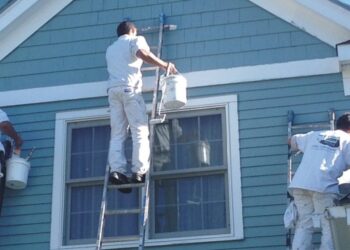Exploring the realm of Best Practices for Business Budgeting and Forecasting, this introduction aims to provide a captivating overview that delves into the importance of financial planning in a corporate setting. From the intricacies of budget development to the strategies for effective forecasting, this guide offers valuable insights for businesses seeking to enhance their financial health and decision-making processes.As we navigate through the nuances of budgeting and forecasting, readers will gain a deeper understanding of how these practices can impact the overall success of a company.
Importance of Business Budgeting and Forecasting
Budgeting and forecasting play a crucial role in the financial planning and decision-making processes of a business. By setting financial goals and mapping out a roadmap for achieving them, companies can effectively manage their resources and monitor their performance.
Enhanced Decision-Making
One of the key benefits of budgeting and forecasting is the ability to make informed decisions based on accurate financial data. By analyzing past trends and projecting future outcomes, businesses can anticipate potential challenges and opportunities, allowing them to adjust their strategies accordingly.
Financial Health Improvement
Accurate budgeting and forecasting can positively impact a company's financial health in various ways. For example, by identifying areas of overspending or underperformance, businesses can implement cost-saving measures and improve operational efficiency. Additionally, forecasting revenue and expenses can help companies allocate resources more effectively and maximize profitability.
Best Practices for Developing a Business Budget
Developing a comprehensive business budget is crucial for the financial health and success of a company. It involves careful planning, analysis, and forecasting to ensure that the business operates efficiently and effectively.
Steps Involved in Creating a Comprehensive Business Budget
- Identify and categorize all sources of income and expenses.
- Review past financial data and trends to make informed projections.
- Set clear financial goals and objectives for the budget period.
- Allocate funds strategically based on the priorities of the business.
- Regularly monitor and adjust the budget as needed to stay on track.
Different Budgeting Methods for Companies
- Incremental Budgeting:Involves making adjustments to the previous budget based on changes in the business environment.
- Zero-Based Budgeting:Requires re-evaluating all expenses from scratch, without considering past budgets, to justify each cost.
- Activity-Based Budgeting:Focuses on the cost of each activity or process within the business to allocate resources more efficiently.
Tips on Setting Realistic Budget Targets and Timelines
- Consider all variables and potential risks when setting budget targets to avoid overestimating revenue or underestimating expenses.
- Involve key stakeholders in the budgeting process to ensure buy-in and alignment with the overall business strategy.
- Establish clear timelines and milestones to track progress and hold accountable for meeting budget goals.
Effective Strategies for Business Forecasting
Effective business forecasting involves a combination of strategies to accurately predict future outcomes and make informed decisions. One key aspect of business forecasting is understanding the difference between short-term and long-term forecasting.
Short-term vs. Long-term Forecasting
Short-term forecasting typically covers a period of up to one year and focuses on immediate decisions such as production planning and inventory management. Long-term forecasting, on the other hand, looks further ahead, usually spanning three to five years or more, and helps with strategic planning, investment decisions, and overall business growth.
- Short-term forecasting: Utilizes tools like moving averages, exponential smoothing, and regression analysis to predict near-future trends accurately
.
- Long-term forecasting: Relies on techniques such as trend analysis, scenario planning, and econometric modeling to forecast broader market shifts and future business performance.
Tools and Techniques in Business Forecasting
Forecasting tools and techniques play a crucial role in generating accurate predictions for business planning and decision-making. Common tools used in business forecasting include:
- Statistical Models: Utilize historical data to create mathematical models that predict future trends.
- Market Research: Conduct surveys, focus groups, and data analysis to understand consumer behavior and market demands.
- Advanced Analytics: Employ data mining, machine learning, and artificial intelligence to extract insights and forecast future outcomes.
Historical Data Analysis for Improved Accuracy
Analyzing historical data is essential for enhancing the accuracy of forecasts by identifying patterns, trends, and anomalies that impact future outcomes. By examining past performance metrics, businesses can:
- Identify seasonal trends and cyclical patterns to anticipate fluctuations in demand.
- Adjust forecasting models based on past errors and improve the overall predictive accuracy.
- Track key performance indicators (KPIs) over time to assess business performance and make informed projections.
Monitoring and Adjusting Budgets and Forecasts
Regularly monitoring budget performance is crucial for the success of any business. It allows companies to track their financial health, identify potential issues early on, and make informed decisions to stay on track with their financial goals. By monitoring budgets and forecasts, businesses can proactively address any deviations from their plans and optimize their resources effectively.
Identifying Variances and Adjusting Forecasts
- Compare actual financial results with the budgeted figures to identify any discrepancies or variances.
- Analyze the reasons behind the variances, whether they are due to internal factors, external factors, or unforeseen circumstances.
- Adjust forecasts based on the identified variances to reflect the most accurate and up-to-date financial projections.
- Consider revising budgets and reallocating resources to align with the adjusted forecasts and ensure financial stability.
Effective Communication of Budget and Forecast Updates
- Provide regular updates on budget and forecast changes to relevant stakeholders within the organization.
- Use clear and concise communication channels to ensure that everyone understands the reasons behind the adjustments and the implications for the business.
- Encourage open dialogue and feedback from team members to foster collaboration and alignment in achieving financial objectives.
- Utilize visual aids, such as graphs or charts, to illustrate the impact of budget and forecast updates in a more accessible and engaging manner.
Final Wrap-Up
In conclusion, mastering the art of business budgeting and forecasting is essential for sustainable growth and informed decision-making. By implementing the best practices Artikeld in this guide, organizations can pave the way for financial stability and long-term success.
Helpful Answers
What is the significance of budgeting and forecasting in business?Budgeting and forecasting help businesses plan for the future, make informed decisions, and maintain financial stability by predicting potential outcomes.
What are some tips for setting realistic budget targets?To set realistic budget targets, businesses should consider historical data, industry trends, and potential risks while ensuring flexibility for unforeseen circumstances.
How can monitoring budget performance benefit a company?Regularly monitoring budget performance allows companies to identify variances, make necessary adjustments, and ensure that financial goals are on track for achievement.









